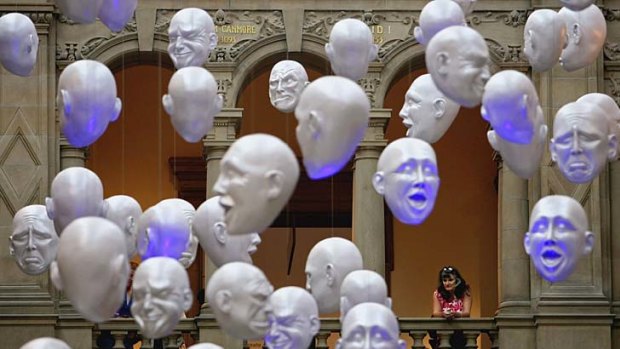
Look this way ... Kelvingrove Art Gallery and Museum in Glasgow.Credit: Getty Images
Art exhibitions and festivals are an increasing drawcard for tourists, writes Patricia Maunder.
Cultural tourism has been around since at least the 17th century, when a privileged few experienced Europe's art and architectural treasures on the Grand Tour.
Now, according to the United Nations' World Tourism Organisation, cultural tourism comprises 35-40 per cent of tourism globally and is growing at about 15 per cent annually - triple the growth of general tourism. This is remarkable, given it was not a distinct "product category" until the 1980s.
That was when it emerged as "an alternative to mass tourism", says Chris Wood, founder of ASA Tours, an Australian company specialising in guided cultural tours.
"The thing that really kicked it off was ... when Glasgow, which was seen as a drab, industrial town, decided to remake itself," he says.
The Scottish city's transformation into an arts destination is widely regarded as one of modern cultural tourism's defining moments.
"Now everybody's doing it," Wood says.
The definition of cultural tourism has expanded into pop and indigenous culture but, however it is interpreted, the arts are a key component.
Venice has extended its appeal with international events such as its visual-art biennale and annual film festival.
Malaysia launched an annual arts expo last year and a Guggenheim will open in Abu Dhabi in 2013.
Although Australia's sales pitch, especially overseas, is focused on natural assets, there is increasing tourist participation in cultural tourism - up 2 per cent annually since 2000, according to the Department of Tourism.
Several cities have embraced blockbuster exhibitions - Canberra's Masterpieces from Paris and Brisbane's Valentino, Retrospective, for example. Melbourne and Sydney vie for the latest musicals and out-of-town audiences, who require accommodation and other tourist services.
It's not only happening in big cities. Regional Australia is also discovering the value of cultural tourism. In 2009, Bendigo Art Gallery's Golden Age of Couture exhibition attracted 75,000 people - almost matching the institution's previous annual attendance. Of these, 60,000 were from outside the region: 91 per cent from elsewhere in Victoria, 8 per cent interstate and 1 per cent overseas. Niche attractions are also appearing.
"People are interested in a more diverse range of what constitutes an arts experience," says the director of the tourism research unit at Monash University, Dr Keir Reeves.
"The Henry Jones Art Hotel in Hobart is a good example; I don't think it would have been on the cards a quarter of a century ago."
Introducing tourism to small communities can have negative consequences. "However much they may want to sell their culture, when you swamp people it's been proved that the locals begin to hate it," Wood says.
Reeves agrees: "If there are arts-based initiatives that are expressions of community values, then you'll get the community involved and you'll have a successful, sustainable model." He points to Vanuatu's Fest'Napuan music festival as an example.
Sign up for the Traveller Deals newsletter
Get exclusive travel deals delivered straight to your inbox. Sign up now.